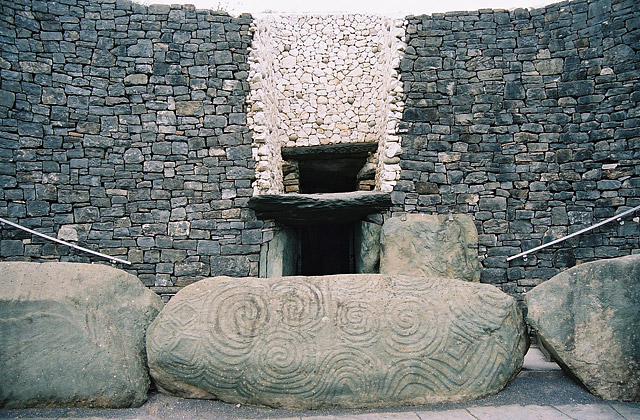Stillness, Nada Yoga, and Cannabis Consciousness
Stillness, Nada Yoga, and Cannabis Consciousness
by Ron Dewhurst
“Sound is the force of creation, the true whole. Music then, becomes the voice of the great cosmic oneness and therefore the optimal way to reach this final state of healing.”1
Hazrat Inayat Khan (1882-1927)
Inner Stillness: The New Ancient Wisdom
As we evolve our modern Cannabis Culture to employ different archaic philosophies and ceremony for using cannabis in a sacred and respectful way, we see developing an evolving deeper connection to oneself and understanding of our true nature. With an alchemical blending of these old and current understandings, we see a fusion of insight and agreements that will take us into a new vision for ourselves and our planet through new ways of being. How do we move forward and create this new wisdom for our time? Do we have symbolic or shared understandings throughout the ages that we have agreements for regardless of our culture or age? Do we embrace these as root practices and wisdom?
One of the root spiritual agreements we all share is the role of stillness and the opening of the heart to the primal transcendent space—a timeless and vast undifferentiated space that the very forces of nature are dependent upon in order to exist—embracing all forms and all levels of consciousness. The void, sunyata, ma, nirvana and emptiness are various words we use to explain an understanding that can only be felt by the awakened soul.
In Joan Bello’s classic work The Yoga of Marijuana, she states that the cannabis ally is an aid to achieving “no thought,” or stillness in the mind field. Continuing on, she states that “Specific to altered states of consciousness with marijuana is the increased time span between neuronal messaging in the brain, which translates as increased spaces between thoughts.”2 Along with this decrease in thought activity, as noticed by stillness-thought pioneers such as Ekhart Tolle, there is a resultant boost of energy that manifests in the present moment.
Sound Practice
Even with the above understandings from cannabis consciousness, there is still work to do to attain greater and extended moments of stillness that lead to freedom from the separate self. Meditation, yoga, and other forms of discipline are necessary tools that can be used or combined to stimulate the endogenous inner states, further enriching the exogenous consciousness instilled by the cannabis plant ally. With these ancient practices we find another agreement within the wisdom of Nada Yoga or Sound Yoga. Nada yoga is an ancient eastern belief that the entire universe and all that exists arise from sound vibrations. Based on this old understanding, we have seen awakening in our culture the use of sound practices with ceremonies. A consciousness shift rooted in inner and outer vibrational effects, practitioners use sound as a palliative aid to the awakening and the destruction of self as the final reality.
For centuries, drums, rattles, and other ethnic instruments have been used to produce and shift states of consciousness that open the heart up and silence the mind field from the constant disturbances by lower energetic thought forms which cloud direct intuitive experience. A Stanford University research study entitled “Brainwave Entrainment to External Rhythmic Stimuli” discovered the following:
“This research supports the theories that suggest that the use of the drum by indigenous cultures in ritual and ceremony has specific neurophysiological effects and the ability to elicit temporary changes in brain wave activity, and thereby facilitates imagery and possible entry into an ASC (altered state of consciousness), especially the SSC (shamanic state of consciousness).”
Melinda Maxfield Ph.D., who led the research, shared a presentation abstract that included the following observations:
“Drumming in general, and rhythmic drumming in particular, often induces imagery that is ceremonial and ritualistic in content and is an effective tool for entering into a non-ordinary or altered state of consciousness (ASC) even when it is extracted from cultural ritual, ceremony, and intent. The drumming also elicits subjective experiences and images with common themes. These include: loss of time continuum; movement sensations, including pressure on or expansion of various parts of the body and body image distortion; “energy waves,” and sensations of flying, spiraling, dancing, running, etc.; feelings of being energized, relaxed, sharp and clear, hot, cold, and in physical, mental, and/or emotional discomfort; emotions, ranging from reverie to rage; vivid images of natives, animals, people, and landscapes; and non-ordinary or altered states of consciousness (ASC), whereby one is conscious of the fact that there has been a qualitative shift in mental functioning., including the shamanic state of consciousness (SSC) journeys, out-of body experiences (OBEs), and visitations.”3
She arrived at the conclusion that the beat and time range most conducive for entering these trance states was 4 to 4.5 beats per second, sustained for at least 12 to 15 minutes. This was an understanding shared worldwide by earlier shamanistic cultures with fast repetitive drumming over sustained periods which can begin with a heart rhythm and then end what is known as a call back rhythm after the trance journey is completed.
The Power and Resonance of Setting
Another shared agreement is the concept of setting as an aid to lead participants into a deeper, more profound, expansive experience. In modern psychedelic therapy, the importance of setting is discussed with criteria such as the sense of a safe environment; the inclusion of music and incense; the choice of colors and textures; stimulating art; and the placement of ceremonial objects and other supportive items. Great early explorers like Albert Hofmann had strong recommendations like “Only in nature.” But what other conditions of setting or place can be found to aid in the expansion of consciousness?
In megalithic places such as the Newgrange Passage Tomb, the Hal Salfieni Hypogeum and Gobekli Tepe, there is an emerging study of archeoacoustics that points toward an ancient forgotten knowledge dealing with the design of temples, sound, resonance and the intentional effect on consciousness. It must be noted that many of these cultures mentioned above were rooted in a deep shamanic tradition where plants played a key role in their spiritual development and holistic health.
Studies have shown that in ancient cultures these locations were chosen via an unseen signature by their unique somatic and spiritual qualities. Most of the powerful inherent earth frequencies lie in the range used by modern science to explore the heart. So now, we have rediscovered a science of sound, which the ancients dedicated an entire multi-disciplinary craft to, from instruments to an immersive sound chamber. An example of this exciting new research is found at the Hal Saflieni Hypogeum in Malta where in the Oracle Chamber section of the ruin, the researchers found it was possible to activate the resonance of the structure with frequencies of both 114Hz and 68-70Hz. This resonance structure created bone-chilling effects when driven by a frame drum and human voice that was magnified a hundred times and echoed for up to 12 seconds. Both these ancient instruments are ideally suited for the frequency range needed to activate the ancient soundscape. Another startling discovery was that at 110 Hz, the brain activity patterns abruptly shifted over the subject’s prefrontal cortex, leading to deactivation of the brain’s language center and right-sided dominant emotional processing.
To further the mysteries at these sacred sites, a research team doing sound research found after analysis a strong spiral magnetic field on one of the chamber`s wall. Further at the center of this spiral there is quiet on the image, a stillness at the center of this energy pattern as in the eye of a hurricane. Can it also sympathetically entangle the mind field of the ceremony participants within this chamber? Is this the next step in creating a more powerful setting that uses forgotten natural sciences which included chamber design, an intuitive consideration of natural earth forces and specific acoustical tunings?
Saying “YES”
So in exploring transcendental resonances, the energy from the cannabis ally, the multi-level dance of nada yoga, are we reclaiming the ancient path to a direct sunyata experience—a state called by modern scientific researchers, the AUB (Absolute Unitary Being), a rare state of experience where the complete loss of space/time and a loss of self where everything becomes an infinite undifferentiated oneness? A space that Franklin Merrell-Wolff, a modern day mystic and philosopher named “Consciousness without an object.
I say “YES.” We’re in an exciting age of spiritual transformation as we rediscover and relearn old wisdoms to blend into our new culture of consciousness awakening.
Notes:
- The Teaching of Hazrat Inayat Khan – The Mysticism of Sound, http://www.hazrat-inayat-khan.org/php/views.php?h1=11&h2=7&h3=0
- Joan Bello The Yoga of Marijuana: https://www.amazon.com/Yoga-Marijuana-Joan-Bello-M-S/dp/1466357452
- Melinda Maxfield, Ph.D., Brainwave Entrainment: https://web.stanford.edu/group/brainwaves/2006/Maxfieldabstract.html




Leave a Reply
Want to join the discussion?Feel free to contribute!